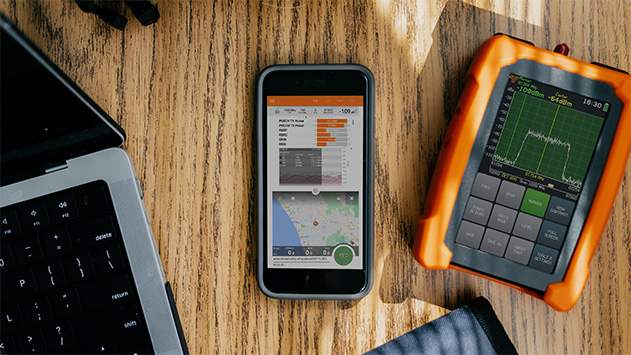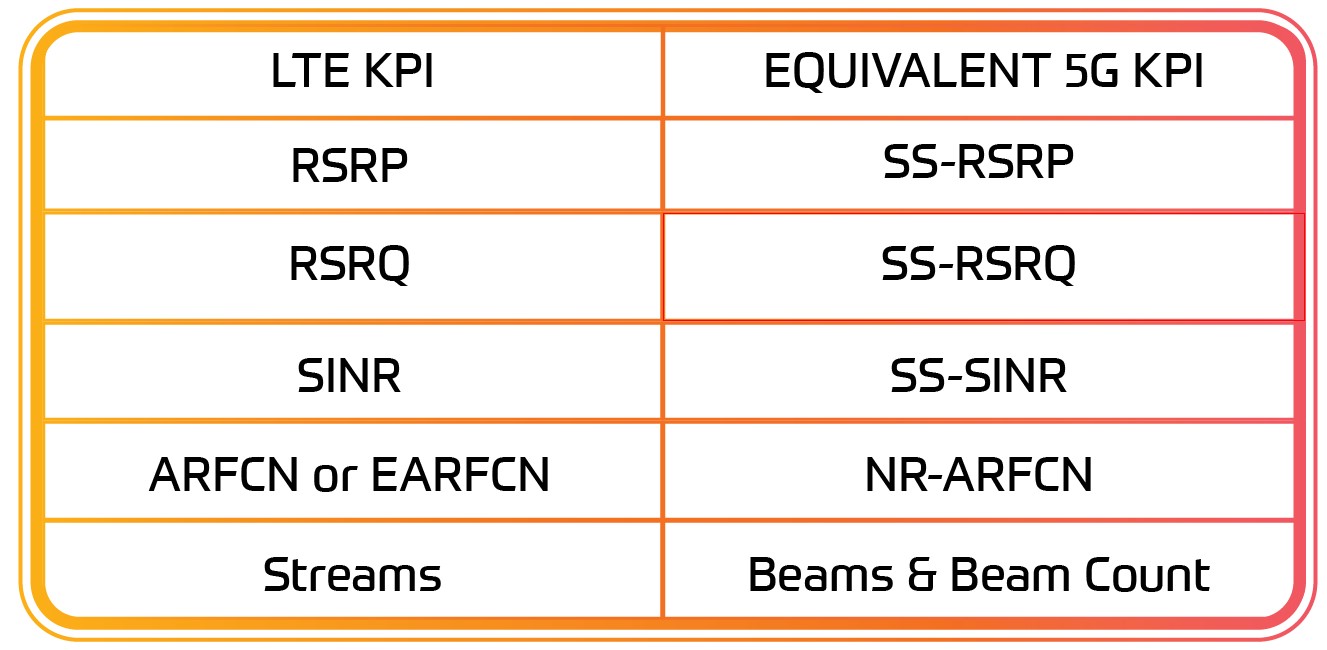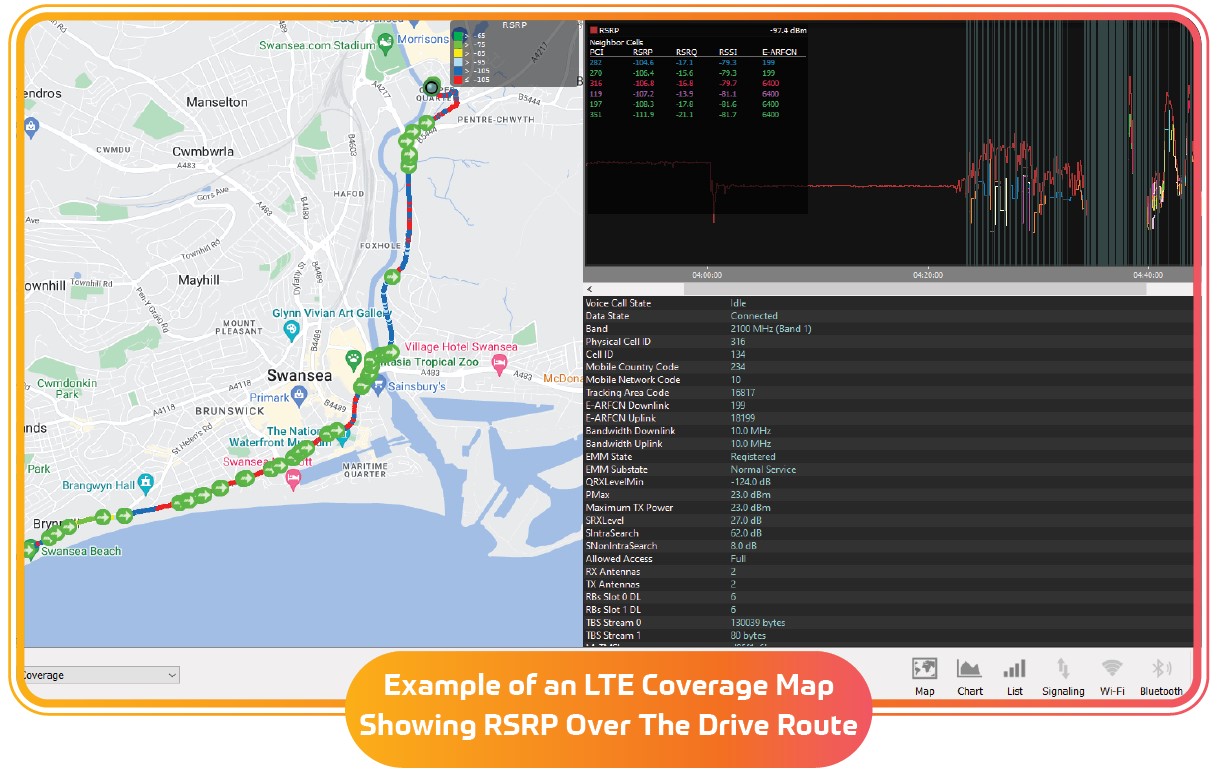Stay up to date with Tempo Announcements and News

Key Factors in Drive Testing 4G/5G Co-Located Networks
Knowing the differences between 4G and 5G networks will make testing co-located networks easier.
One of the first things to know when testing co-located 4G and 5G networks is the subtle differences between the two. These differences can be generally categorized as either physical implementation differences (MIMO configurations, for example), or protocol differences such as KPI nomenclature. Both obviously play a part in understanding how to test and optimize your network. The intention of this article is not to dive into a deep discussion of these differences, but merely to present a practical guide to field technicians needing to collect the data necessary for network optimization.
When talking about the physical implementation of 4G versus 5G, one of the biggest differences is in antenna and beam forming specifications. LTE is based on “normal” MIMO, whose maximum number of elements is limited to 8 (DL) x 8 (UL). In contrast, 5G can support 256 (DL) x 32(UL). That is quite a difference! Obviously, the complexity of 5G has the potential to exponentially increase testing results, thereby increasing the time it will take to interpret the results.
Thankfully, most current networks do not use the maximum number of MIMO elements for either specification. As of this writing, a large percentage of operators in the US have implemented 4x4 MIMO configurations. 5G implementations are similar, with none closely approaching the maximum theoretical limits of the protocol.
With regards to KPI nomenclature, there are several simple KPIs that were defined differently. The table below lists some of the more common ones. When reading test results, it’s important to know these differences so you don’t waste time looking for them later. Including:

Obviously, this is a short list and represents KPIs familiar to most technicians and RF engineers. A fundamental understanding of LTE and 5G theory are necessary to understand that there are features in the 5G protocol that simply do not exist in LTE. We will save that topic for another discussion.
Assessing Your Network
Upfront work is needed to be done by the RF engineer in order to prepare for drive testing a co-located network. This will allow the test parameters and goals to be defined, so everyone on the team is clear on the required tasks. Assessment of the co-located network can include the following:
Defining the area or venue of the drive test
Understanding the radio equipment in terms of whether the same antennas and/or radios are transmitting both 4G and 5G
The bands being used for each respective technology
Goals of the test: There are times when you have specific things you are looking for, especially if the central office KPIs are reporting degraded performance. Other times, engineers are simply looking to acquire data to ensure performance is within parameters. In either case, having goals defined for a drive test will significantly reduce both test setup, actual test time, and interpretation of results
Phone Compatibility
Obviously, drive testing a co-located 4G/5G network requires using phones that are compatible with 4G and 5G. We recommend a minimum of three phones used in testing initially, to cover the basic functional tests needed for initial testing. The best and most time efficient method is to perform your drive simultaneously using:
A phone compatible with both 4G and 5G, in order to test the full user experience. This will include not only intra-band handoffs (4G to 4G) but also inter-band handoffs (4G to 5G or vice versa).
A phone to test only the 4G network. This can be a phone that is only a 4G compatible phone or using a phone that supports multiple technologies but is locked to a particular technology using your drive test software.
A phone to test only the 5G network. As in the case of a 4G only test, either a phone that only supports 5G or drive test software that can lock to only 5G is necessary.
Using these 3 phones simultaneously, a network engineer will be able to obtain a complete picture of the performance of his co-located network.
Critical Drive Test Features Needed
When performing the tests in the previous section, your drive test tool must have certain features in order to test your 4G/5G co-located network properly.
First is the most obvious, that the drive test tool must understand both 4G and 5G simultaneously, so the user does not have to spend time switching between different applications. In the past, some tools were built specifically for 3G or 4G, and had to have added modules to test 5G. Make sure your tool is able to hand test seamlessly.
Second, your drive test tool must have features to “lock” a phone to a particular, technology, band, or even PCI. This will obviously allow for tests that are isolated to particular areas of the network. If you do not have phone locking capabilities, the phone will float to whatever the network software tells it to do, and thus the user loses control over staying on a particular area to test.
Lastly, while this is not an absolute technical requirement, a feature that will make testing easier and more turnkey is to be able to set up the testing beforehand, so precious onsite time is not wasted. It is complicated enough keeping track of the different bands and equipment you have in your network. If you can setup your test offsite, it will make the onsite testing go faster and smoother

Knowing the differences between 4G and 5G will help with drive testing your 4G/5G co-located networks. Knowing what is in your network, and understanding which technologies, bands, and PCIs are needing to be tested goes a long way towards successful collection of test data. Certain phones and drive test software features are necessary to ensure proper and efficient testing.
